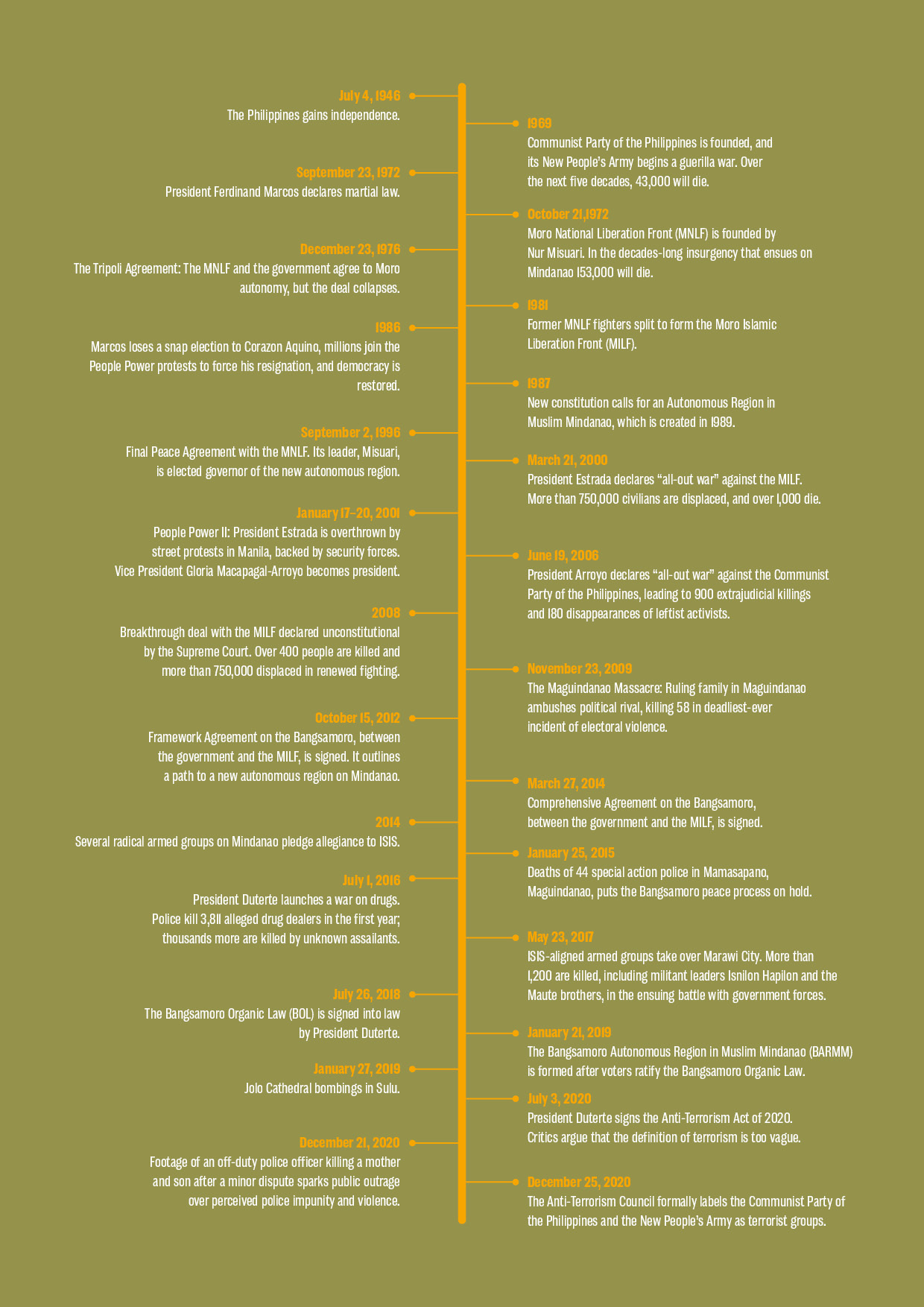The State of Conflict and Violence in Asia 2021
The Philippines

Overview
In early 2019, a new step was taken towards resolving the long-term subnational conflict in the southern Philippines. Following negotiations between the national government and the Moro Islamic Liberation Front (MILF), the landmark Bangsamoro Organic Law (BOL) was endorsed in a two-stage plebiscite. This inaugurated the Bangsamoro Autonomous Region in Muslim Mindanao. This governance structure endows the region with a degree of autonomy in religion and cultural rights, some fiscal control, and greater control of its natural resources. While the law was intended to install the Bangsamoro Transitional Authority until May 2022, and then to make way for the region’s first elections, there are proposals to postpone the elections until 2025 or 2028.
The Comprehensive Agreement on the Bangsamoro, signed in 2014, built a path towards peace, although it did not incorporate all armed groups in the region. The Agreement led to the passage of the Bangsamoro Organic Law in 2018, following the 2017 siege of Marawi in Lanao del Sur Province of Mindanao. The battle, between government forces and an alliance of armed nonstate actors who had seized the city, lasted for five months, killing more than 1,300 and displacing 360,000. Key ISIS-affiliated organizations involved in the siege, including elements of the Abu Sayyaf Group and the Maute Group, were weakened but remain active.
Rates of local electoral violence, resource conflict, and criminal violence are high compared to many countries in the region. President Rodrigo Duterte pledged to continue the War on Drugs campaign until the end of his term in 2022, despite international scrutiny of human rights abuses. Journalists and publications in the Philippines have faced growing pressure from the government. Since President Duterte assumed office, there have been at least 171 incidents of attacks and threats against the media, including the deaths of 15 journalists.
The conflict between the Philippine government and the Communist Party of the Philippines continues at a low level of intensity. Over 120,000 combatants and civilians have died in the struggle since 1969, and multiple peace efforts have been unsuccessful. In December 2018, President Duterte created the National Task Force to End Local Communist Armed Conflict, but two years later he stated that he would not allow any ceasefire with the New People’s Army, the armed wing of the Communist Party, until the end of his term in 2022.
The Covid-19 pandemic spread across the Philippines in 2020 and the government imposed strictly enforced lockdowns as infection rates rose. The resulting economic damage was particularly significant for disadvantaged groups, including those displaced by conflict. The pandemic appears to have exacerbated existing conflict tensions across Mindanao.